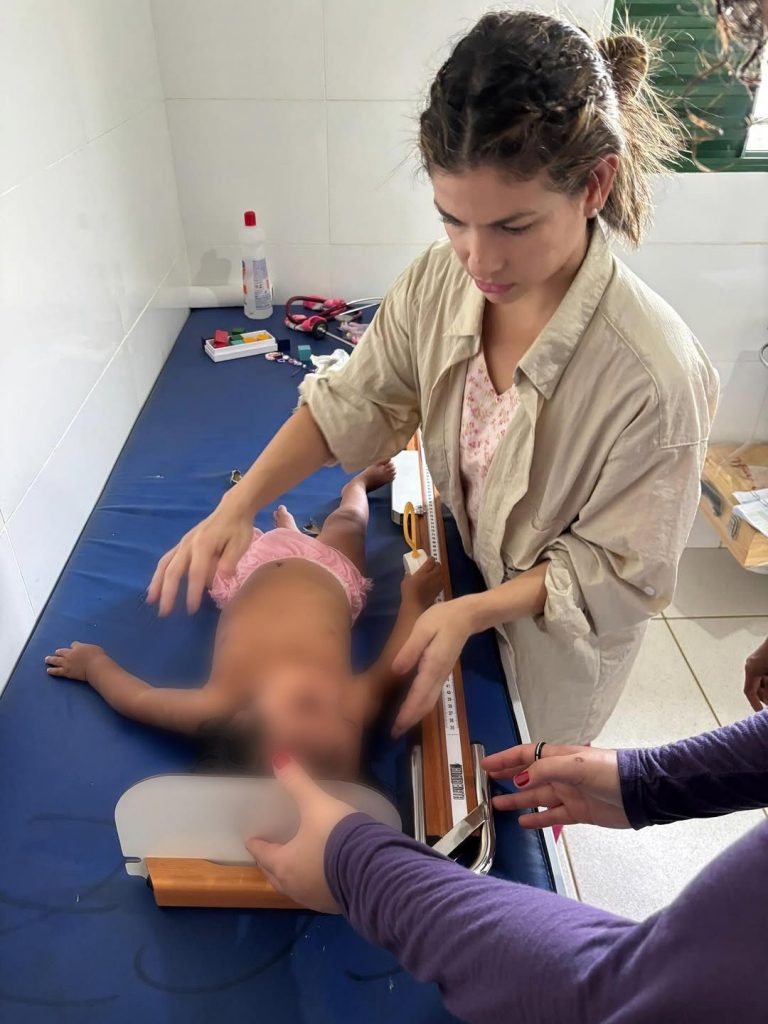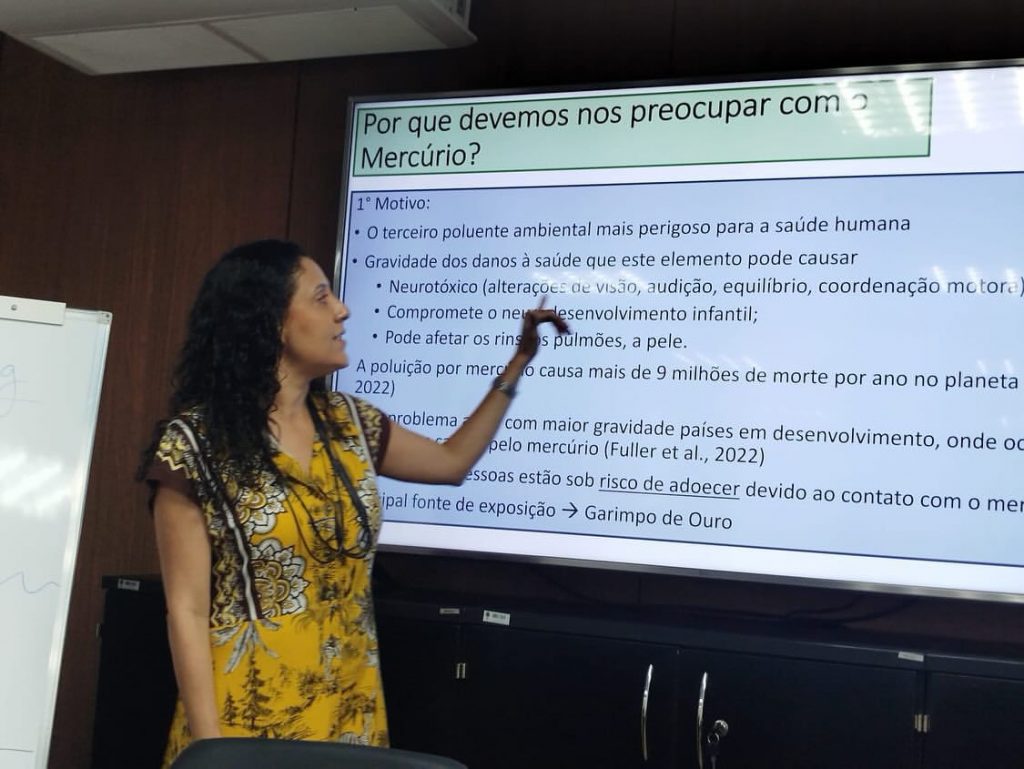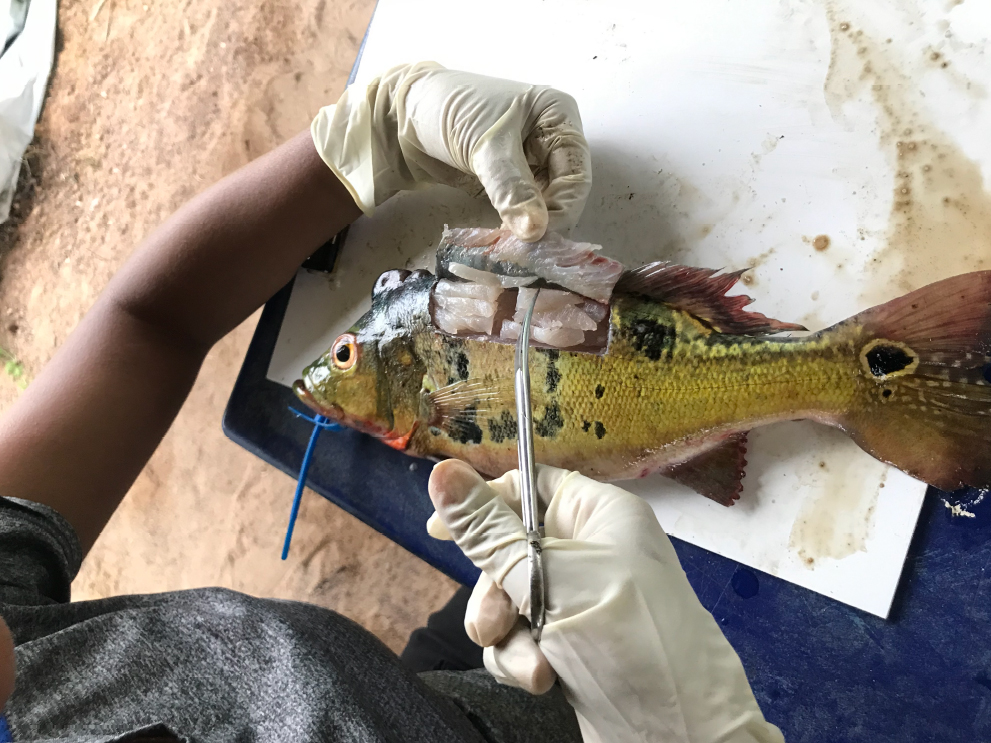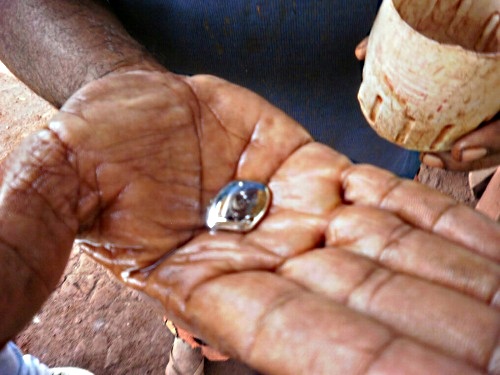Mining mercury contaminates Munduruku pregnant women and babies in the COP30 host state
25 de June de 2025

By Fabyo Cruz – From Cenarium
BELÉM (PA) – Munduruku Indigenous pregnant women and babies in the mid-Tapajós region, in western Pará, are being exposed to alarming levels of mercury – a highly toxic substance used in illegal mining activities. The data are part of a study conducted by the research group Environment, Diversity, and Health at the National School of Public Health (ENSP/Fiocruz), which has been monitoring the health impacts of mercury contamination on Indigenous populations since 2019.
Preliminary results, presented at a workshop held June 11–13 this year in Itaituba (PA), showed that 98.5% of the 133 Indigenous pregnant women analyzed by May 2025 had mercury levels above the safety threshold set by the Oswaldo Cruz Foundation (Fiocruz) and the Ministry of Health (MS), which is 2.0 micrograms per gram (µg/g) of hair.
The average level recorded among them was 9.9 µg/g, and about 41% of the results showed levels higher than 10 µg/g. The highest value identified was 31 µg/g. In one village near mining areas, nine out of ten women had elevated levels of the substance.
Among the 70 babies already assessed, only two had levels within the safe range. The average was 5.8 µg/g, with nearly half of the children (47%) above 6 µg/g and 7% exceeding 10 µg/g. In the village closest to mining activity, all the babies were contaminated.
The study is part of a longitudinal research project – a methodology in which participants are monitored over a long period – aiming to investigate the effects of prenatal exposure to methylmercury on the neurological development of Indigenous children. The pregnant women have been monitored since the first trimester, and the babies are followed for two years after birth, with evaluations conducted by child neurologists and neuropsychologists.

“The idea of this study was to recruit pregnant women early in their pregnancy and monitor both mercury levels and health problems over time. After the child is born, they are also followed for two years, focusing on possible neurodevelopmental delays,” explained researcher Ana Cláudia Vasconcellos, of EPSJV/Fiocruz, in an interview with CENARIUM.
Impacts
The specialist emphasized that the impacts of mercury exposure during pregnancy can be severe and irreversible. “When a pregnant woman eats fish contaminated with methylmercury, the child may be born with serious cognitive problems. And those damages, acquired while still in the womb, are completely irreversible,” she warned. “Often, these are silent problems. The child grows up with difficulties in school or socialization, and no one links it to the contamination. But in fact, that child was condemned in the womb to have impaired intellectual performance,” she said.

Contaminated diet
Methylmercury, the main form of the substance found in the analyzed cases, is not present in water but accumulates in the aquatic food chain, especially in carnivorous fish such as tucunaré, pirarucu, filhote, and piraíba. These fish, according to the specialist, concentrate the mercury released into the environment through the indiscriminate use of metallic mercury during gold extraction in mining areas. When consumed frequently, methylmercury can cause various neurological effects.

“It’s a common mistake to think mercury contaminates people through river water. That’s not how it works. Contamination happens through the ingestion of fish and other animals from the aquatic biota,” Vasconcellos emphasized. She pointed out that “the water has very low, almost undetectable levels because the mercury goes to the sediment or is quickly absorbed by aquatic organisms.”
Symptoms
Among the symptoms reported in adults are: loss of sensation, motor changes, coordination difficulties, and cardiovascular problems. “Mercury can cause hypertension, increased risk of heart attack, and in chronic exposure cases, neurological issues like tremors, insomnia, and changes in vision and hearing,” she detailed.
In children exposed during pregnancy, the damage can be even more severe. “If the levels are very high, the child may even be born with cerebral palsy, as happened in Minamata, Japan. In the Amazon, we’re not certain yet if that’s happening, but there are strong indications and serious hypotheses that similar cases may be occurring,” said the researcher.
Prevention
Since contamination is chronic and there is no effective medication to eliminate mercury from the body, the main preventive measure recommended by the Fiocruz team is a change in diet. The recommendation is for pregnant women and people with high levels of the substance to avoid eating carnivorous fish and prioritize herbivorous species such as pacu, tambaqui, and matrinxã, which are less likely to be contaminated.

“If a person has high levels of mercury or is a pregnant woman, she needs to stop eating carnivorous fish. They should not eat piranha, tucunaré, filhote, pirarucu. Herbivorous fish, however, can be eaten daily,” the researcher advised. “That helps protect the fetus and, in the case of adults, allows for a gradual reduction of contamination,” she added.
Indigenous health
The study, coordinated by physician and researcher Paulo Basta, will continue at least through the second half of 2026. A technical manual aimed at Indigenous health professionals was also launched in May 2025. The material guides teams at base hubs and Special Indigenous Health Districts (DSEIs) on how to identify clinical signs related to mercury contamination and how to provide appropriate care.
“Treating Indigenous people exposed to mercury requires preparation. That’s why we created a manual that helps professionals recognize symptoms, provide care, and recommend dietary changes,” explained Vasconcellos. “It’s a fundamental tool for the Indigenous public health system to address this growing issue,” she added.

